(社)日本都市計画学会メールニュースをそのまま転載します。
No.231 配信日:2007年11月8日
====================================
特別講義のご案内
“Getting started on a large and complex design”
Carl Steinitz教授(ハーバード大学デザイン・スクール)
“The future city as new nature”
Catherin Bull教授 (メルボルン大学建築・計画学部)
日時:平成19年11月13日(火) 9:30-12:30
主催:東京大学サステイナビリティ学連携研究機構 (IR3S)
東京大学21世紀COEプログラム「都市空間の持続再生学の創出」
会場:東京大学本郷キャンパス 薬学系研究棟10F大会議室
http://www.u-tokyo.ac.jp/campusmap/cam01_10_02_j.html
(事前申し込みなど特に必要ございませんので、当日会場まで直接お越し下さい)
【講演要旨】
“Getting started on a large and complex design”
The special problems of beginning large and complex planning/design studies
and projects will be discussed. The talk will include the framework of
questions which I use to organize large landscape planning studies, and
present several strategies for 'getting started'. It will emphasize the
roles of simple drawn diagrams and how they can be combined to rapidly
assess alternative scenarios. Examples from several of prior studies in
Bermuda, Jerusalem, the Madrid region, and Mexico City will be shown.
“The future city as new nature”
Traditionally, the natural areas (the "un-made world") beyond the city were
relied upon to sustain us by balancing the impacts wrought by urban activity
(the "made world") -- cleaning air and water and providing breeding grounds
for plant and animal species on which all life relies. The made world of
settlement has however, extended so far into what was previously considered
nature that this approach is under challenge. Achieving sustainability in
this context requires us to be more careful requires that we are more
careful about where we expand our settlements and how, improving
environmental quality by balancing the made and un-made worlds within
through "positive development" rather than relying on areas beyond the city
to balance our impacts. In the contemporary world, settlement is expansive,
multi-nodal and sub- (or post-) urban rather than urban, a matrix of
development and remnants of nature, the made and un-made. As previous
generations have sought to create a balance between these worlds, so too
must we, re-defining the purpose of open space and nature within the matrix
that now typifies our cities. The discussion explores this idea, suggesting
that we need a new paradigm for our cities -- where the cities themselves
become nature -- new nature -- incorporating functioning ecosystems,
internalizing eco-processes and being the places where we learn what nature
is and has become."
詳細は下記IR3Sウェブサイトより御覧ください。
http://www.ir3s.u-tokyo.ac.jp/
本件担当:原 祐二(東京大学IR3S/TIGS 特任助教)
No.231 配信日:2007年11月8日
====================================
特別講義のご案内
“Getting started on a large and complex design”
Carl Steinitz教授(ハーバード大学デザイン・スクール)
“The future city as new nature”
Catherin Bull教授 (メルボルン大学建築・計画学部)
日時:平成19年11月13日(火) 9:30-12:30
主催:東京大学サステイナビリティ学連携研究機構 (IR3S)
東京大学21世紀COEプログラム「都市空間の持続再生学の創出」
会場:東京大学本郷キャンパス 薬学系研究棟10F大会議室
http://www.u-tokyo.ac.jp/campusmap/cam01_10_02_j.html
(事前申し込みなど特に必要ございませんので、当日会場まで直接お越し下さい)
【講演要旨】
“Getting started on a large and complex design”
The special problems of beginning large and complex planning/design studies
and projects will be discussed. The talk will include the framework of
questions which I use to organize large landscape planning studies, and
present several strategies for 'getting started'. It will emphasize the
roles of simple drawn diagrams and how they can be combined to rapidly
assess alternative scenarios. Examples from several of prior studies in
Bermuda, Jerusalem, the Madrid region, and Mexico City will be shown.
“The future city as new nature”
Traditionally, the natural areas (the "un-made world") beyond the city were
relied upon to sustain us by balancing the impacts wrought by urban activity
(the "made world") -- cleaning air and water and providing breeding grounds
for plant and animal species on which all life relies. The made world of
settlement has however, extended so far into what was previously considered
nature that this approach is under challenge. Achieving sustainability in
this context requires us to be more careful requires that we are more
careful about where we expand our settlements and how, improving
environmental quality by balancing the made and un-made worlds within
through "positive development" rather than relying on areas beyond the city
to balance our impacts. In the contemporary world, settlement is expansive,
multi-nodal and sub- (or post-) urban rather than urban, a matrix of
development and remnants of nature, the made and un-made. As previous
generations have sought to create a balance between these worlds, so too
must we, re-defining the purpose of open space and nature within the matrix
that now typifies our cities. The discussion explores this idea, suggesting
that we need a new paradigm for our cities -- where the cities themselves
become nature -- new nature -- incorporating functioning ecosystems,
internalizing eco-processes and being the places where we learn what nature
is and has become."
詳細は下記IR3Sウェブサイトより御覧ください。
http://www.ir3s.u-tokyo.ac.jp/
本件担当:原 祐二(東京大学IR3S/TIGS 特任助教)










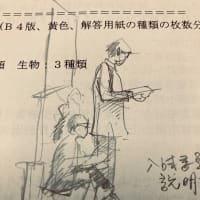


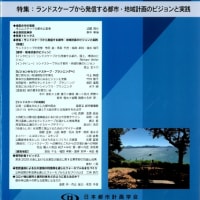
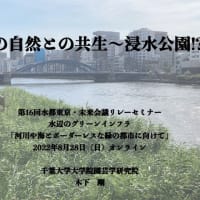

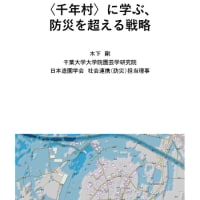
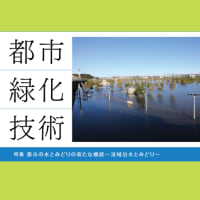

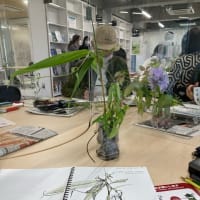
※コメント投稿者のブログIDはブログ作成者のみに通知されます